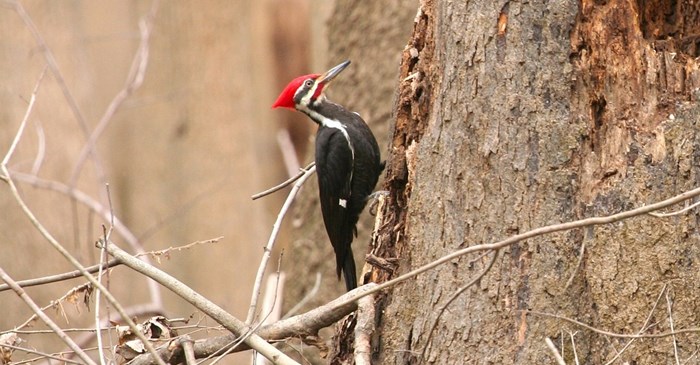Spring is a big season for the birds. Just step outside, and a symphony of bird sounds fill your ears. One of these is the percussive tappings of the woodpecker. In the early spring, they start hammering away at trees, on buildings, even metal surfaces such as chimneys and drainpipes. Any hard surface will do, just as long as it rings out and catches the fancy of a prospective mate.
Beyond wanting to make noise before nesting season, woodpeckers do a lot of other hammering with those long bills. They hammer to hollow out an opening for a nest, and they hammer to reach the tasty insects that lie beneath the bark of a tree. In fact, woodpeckers can hammer at a rate of 18 to 22 beats per second, up to 12,000 times per day.
That leads to a very natural question. After all that pounding on hard surfaces, essentially using one’s head as a hammer and chisel, how do woodpeckers avoid headaches?
First, there’s the woodpecker’s size. Have you ever heard the phrase, the bigger they are, the harder they fall? It also applies to headbanging against the trees. A woodpecker’s brain is much smaller than that of a human's, so when you factor in the scale differences, the impact on the woodpecker is less intense, according to MIT professor Lorna Gibson.
Second, the woodpecker uses its upper bill, which is very strong and thick, and likely absorbs the impact of the hammering, Gibson says.
Third, there’s a key difference between a human skull and a woodpecker skull. A human’s skull has fluid between the brain and the skull. A woodpecker’s brain fits more snugly into the skull, like a helmet against the forces of hammering.
To learn more, be sure and watch Gibson's very fascinating film series, Built to Peck: How Woodpeckers Avoid Brain Injury, an eight-part series of brief segments posted on YouTube.
